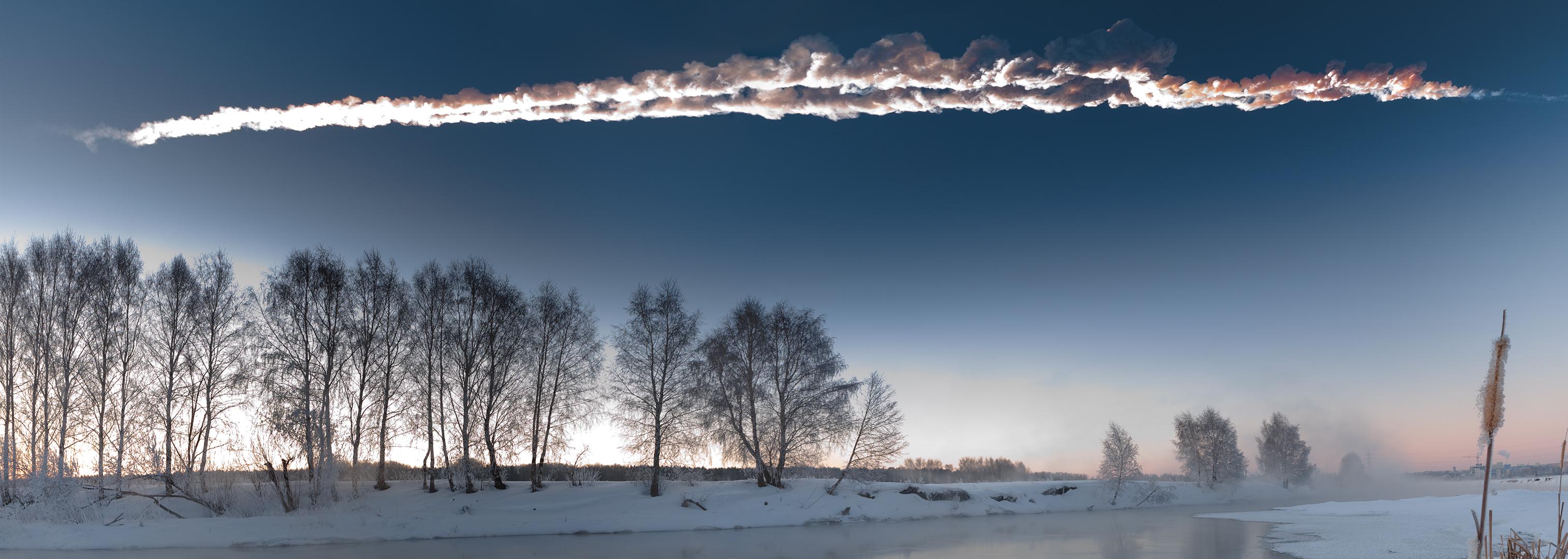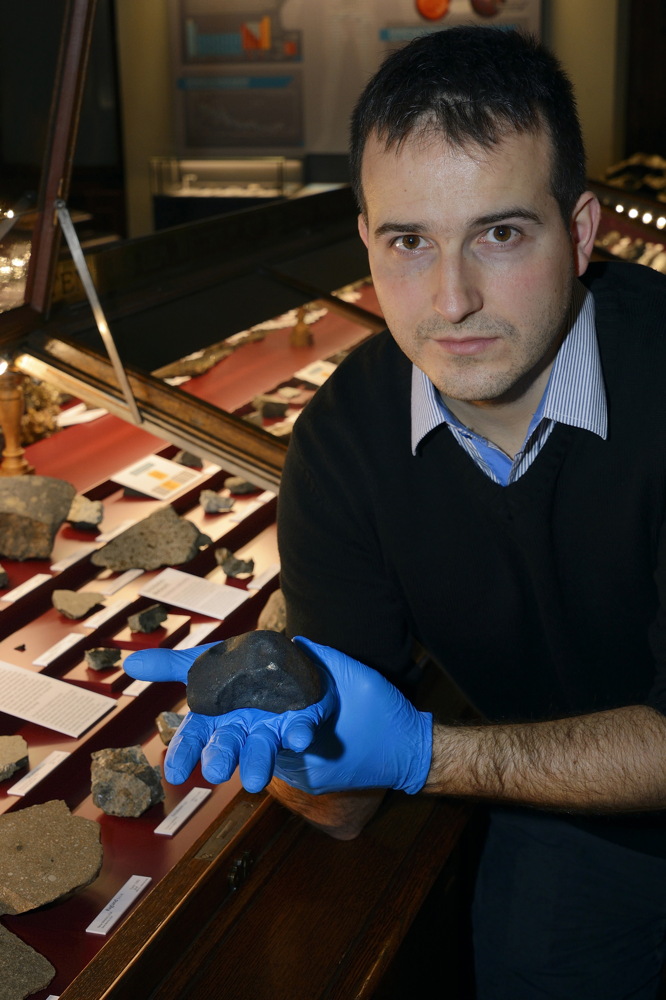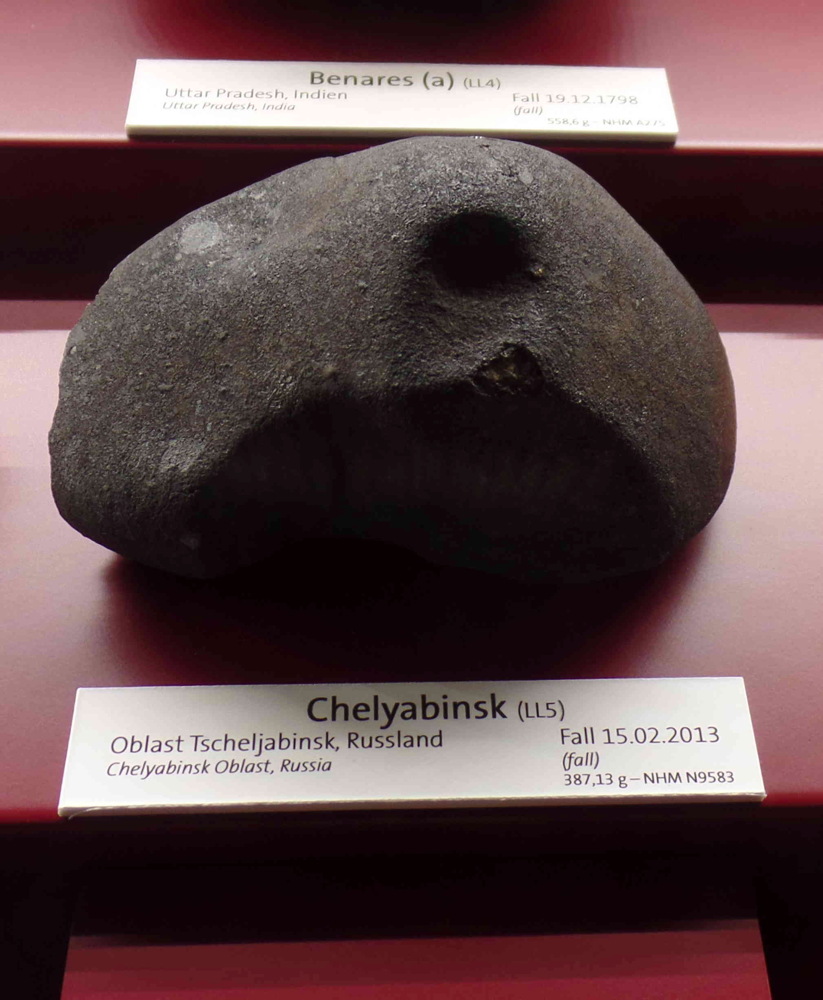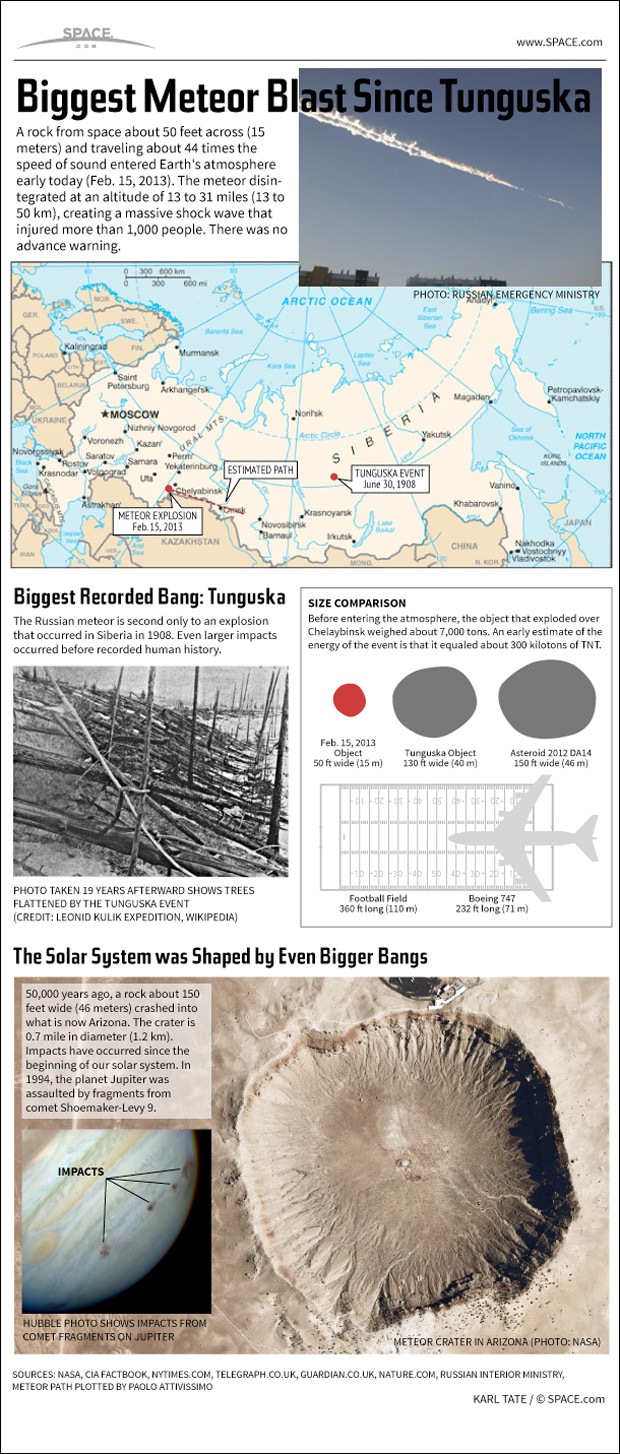
Meteorite Fragments from Russian Fireball on Display 1 Year After Space Rock Explosion

The explosion of a meteor over the southern Ural region of Russia last year peppered the area with varying sizes of space rock leftovers.
That stunning Feb. 15, 2013, event and the resulting shock wave caused considerable damage to lots of buildings and injured more than 1,500 people — primarily from shattered windows — in the city of Chelyabinsk, more than 35 miles (about 60 kilometers) from the explosion site.

Many of the recovered Chelyabinsk fragments are now on display at the Natural History Museum in Vienna, and are appropriately showcased in Meteorite Hall. Overall, that collection includes about 1,100 meteorites, including 650 different meteorites, consisting of 300 falls and 350 finds. When a meteorite is viewed falling from the sky and then collected on terra firma afterward, it is called a fall. Meteorites that are recovered without being seen 1falling are called finds. [See photos from the Russian meteor explosion]

Hall of meteorites
Just a few days after the Chelyabinsk fall, the museum acquired a dozen small stones. Several more samples of the Chelyabinsk meteorite were acquired later, including a large single fragment weighing 13.65 ounces (387 grams).
That big sample was put on display in the museum's Meteorite Hall exactly one year after the fall. It's in showcase 85, in the central part of the display, next to the historically important and precious Ensisheim samples — a fall that occurred in 1492.
The largest recovered stone of the Chelyabinsk fall, which weighs more than 1,430 lbs. (650 kilograms), was hauled out of Lake Chebarkul in Russia.
Get the Space.com Newsletter
Breaking space news, the latest updates on rocket launches, skywatching events and more!
Surviving the atmospheric fall, fireball fragments hit the frozen façade of the lake, making a 20-foot-diameter (6 meters) hole in the icy topside. The big chunk that was dredged up is now displayed in the Chelyabinsk State Museum of Local History in Russia.
Observations from fragments

Researchers at the Natural History Museum in Vienna have performed scientific investigations on the Chelyabinsk fragments within the framework of an interdisciplinary and international study.
According to museum scientists, petrographic observations of the recovered bits and pieces of the object have led to several observations:
- They confirmed the Chelyabinsk meteorite should be classified as a stony meteorite, an ordinary chondrite of the type LL5.
- The 4.6-billion-year-old meteorite contains chondrules (solidified melt droplets representing a high-temperature component) and is heavily brecciated and cross-cut by impact melt veins.
- Along with colleagues in Bratislava, Slovakia, and Tucson, Ariz., the researchers determined the contents of the so-called cosmogenic radionuclides. These are isotopes that form when the meteoroid is irradiated by cosmic rays in space, before a collision with the Earth. This information is used to derive the size of the meteoroid and to estimate were the Vienna Natural History Museum samples of the Chelyabinsk meteorite were located within the meteoroid before it exploded.
The results of the joint research on the fragments have been submitted for publication to the journal Meteoritics & Planetary Science.

Collector market
Though they have cooled down, the Chelyabinsk fragments remain, to some extent, hot property, said Michael Gilmer of Galactic Stone and Ironworks in Lutz, Fla.
"The Chelyabinsk fall dropped over one ton of meteorites — and probably closer to two tons, taking into account unreported finds," Gilmer told Space.com. "This consists of thousands of complete stones and partial fragments."
Gilmer said the collector market is saturated with specimens from the Chelyabinsk fall, ranging from less than a gram to roughly a kilogram. About 20 percent of the stones are the secondary impact melt lithology.
"Prices vary widely," Gilmer said, "but a rough range is $5 a gram for oxidized broken fragments to $25 a gram for select fresh whole stones with orientation features."
Note: Special thanks to Verena Randolf of the Natural History Museum in Vienna for assistance in this story.
Leonard David has been reporting on the space industry for more than five decades. He is former director of research for the National Commission on Space and co-author of Buzz Aldrin's new book, "Mission to Mars – My Vision for Space Exploration," published by National Geographic. Follow us @Spacedotcom, Facebook and Google+. Original article on Space.com.
Join our Space Forums to keep talking space on the latest missions, night sky and more! And if you have a news tip, correction or comment, let us know at: community@space.com.

Leonard David is an award-winning space journalist who has been reporting on space activities for more than 50 years. Currently writing as Space.com's Space Insider Columnist among his other projects, Leonard has authored numerous books on space exploration, Mars missions and more, with his latest being "Moon Rush: The New Space Race" published in 2019 by National Geographic. He also wrote "Mars: Our Future on the Red Planet" released in 2016 by National Geographic. Leonard has served as a correspondent for SpaceNews, Scientific American and Aerospace America for the AIAA. He has received many awards, including the first Ordway Award for Sustained Excellence in Spaceflight History in 2015 at the AAS Wernher von Braun Memorial Symposium. You can find out Leonard's latest project at his website and on Twitter.









